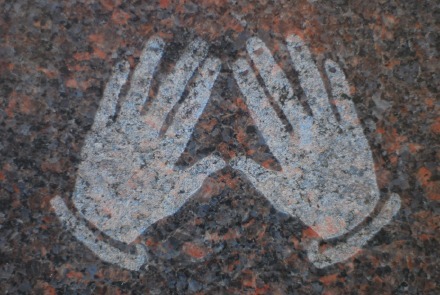On Jewish tombstones you will sometimes see a symbol showing two hands arranged for the Priestly Blessing like the example here. This is a symbol of the Kohen or Cohen (Hebrew for priest). The plural form is Kohanim or Cohanim. Kohanim are assumed to be direct male descendants of Aaron, who was the first Kohen and the brother of Moses. Some Jewish surnames frequently associated with this symbol are Conn or Cohn (Kohn), Cahn (Kahn), and Cohen (Kohen), but you will find the symbol on the grave markers of people with other surnames. Today families can sometimes verify a priestly lineage from the tombstones of ancestors that have this symbol.
Mr. Spock’s Vulcan Salute
And yes, Star Trek fans… You’ve probably noticed the similarity between this symbol and the Vulcan hand greeting (“live long and prosper”) used in the TV show and movies. This was suggested by actor Leonard Nimoy (Mr. Spock), who saw the Priestly Blessing in a synagogue when he was a child. He modified it as Vulcans use only one hand. See: The Jewish Origin of the Vulcan Salute

Photo: from Fairmount Cemetery, Denver, Colorado



 Posted by Joe
Posted by Joe 





